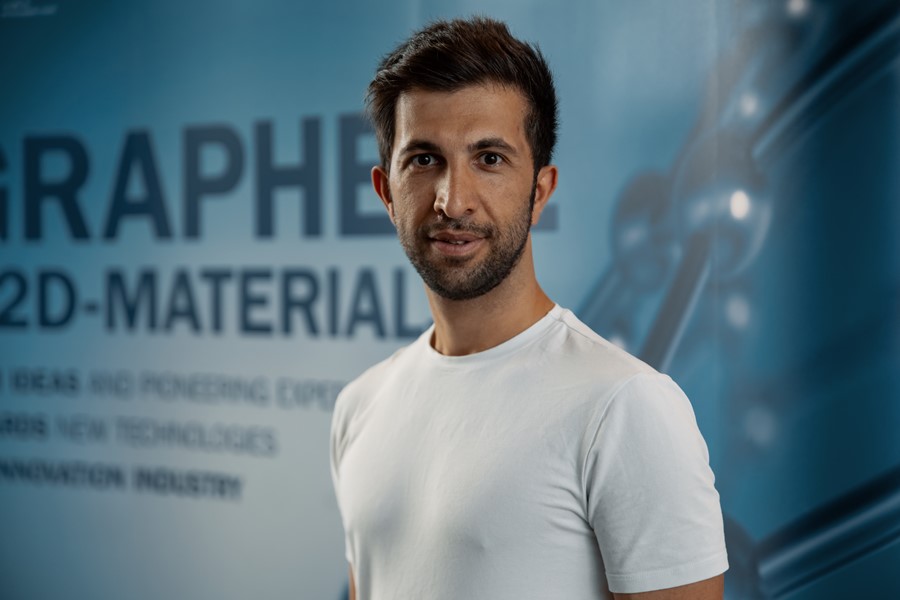Spotlight: Mainstreaming graphene and layered materials with Bojan Haidar
Bojan Haidar aims to bring graphene and layered materials from the scientific community to a broader public.
Bojan Haidar is an industrial PhD fellow with the Autonomous University of Madrid in Spain, while employed by the Graphene Flagship Partner Avanzare. He aims to bring layered materials from the scientific community to a broader public, raise awareness about graphene related materials’ (GRMs) contribution to a more sustainable future and induce sustainability transitions in various sectors. As consultant of Avanzare, he has been actively engaged in the Graphene Flagship’s Production Work Package, and helped in the registration of GRMs with the European Chemicals Agency (ECHA). His economics and innovation managing skills bring new insights in the graphene community.
Why did you decide to focus your research interest on graphene?
Originally, the focus of my research was centered around the embedding of Advanced Materials in society. Then I narrowed it down to graphene, because of Avanzare’s strength in the production and worldwide supply of graphene and layered materials. So I became an enthusiastic ambassador of mainstreaming graphene in society.
Doing research about this topic allowed me to pursue my interest, hone my problem-solving skills, and challenge myself in new ways. I have discovered that these aspects are what interest me the most. At the same time, I have developed an active curiosity for achieving impact at scale, which helps me transform lab-scale technologies into mainstream technologies.
What’s your research topic in detail?
My PhD research focuses on the mainstreaming of graphene for sustainable development. More specifically, we anticipate the socio-technical challenges affecting the transition toward layered materials by using well-established foresight methods and relying on the knowledge of graphene experts.
I also aim to explore and understand the challenges of the implementation of the Safe- and Sustainable-by-Design (SSbD) framework – an approach to accelerate regulatory approval and market uptake of new and alternative chemical products and technologies with safety, environmental and societal benefits – in European firms that work with graphene and layered materials firms. The SSbD framework is a key action in the Chemical Strategy for Sustainability of the European Commission and part of the Green Deal. This is a massive project that we expect will have an enormous impact on the graphene community.
How can we mainstream graphene and layered materials in a sustainable way?
Layered materials can spur sustainability transitions. However, sustainable development and societal challenges are global in nature and require processes beyond traditional market fixing and mechanisms. Mainstreaming processes entail the involvement of the entire society, including suppliers, applications developers, users, policymakers, etc. Thus far, what we know about graphene and its contribution to sustainable development has been almost exclusively focused on market mechanisms, profit and suppliers. To mainstream graphene for sustainable development, one must include the society as a whole in the process to make it inclusive and just. We need to involve more application developers, users, policymakers and the rest of society.
Which are the possible pitfalls that should be prevented when mainstreaming innovation for sustainable development?
We investigate which barriers (e.g. quality, processability, scalability, price, handling, etc.) slow down graphene mainstreaming. These are challenging to reconfigure because of the different interests of the different stakeholders. At the same time, societal challenges related to sustainable development are not place-based and are global. In my latest paper [1], we highlighted the barriers that require urgent action to bend the obstacles in the right direction and enable a smooth transition toward graphene-enabled energy storage devices, such as next-generation batteries.
Which books would you suggest to someone who is interested in applying sustainability to innovation?
In the past couple of years, I have discovered the work of Mariana Mazzucato, which has inspired me a lot in the way I see the world. Mazzucato’s book Mission Economy has been an inspirational piece of literature for me and impacted my work in many ways. Undoubtedly, I would recommend this book to anyone who is interested in mainstreaming novel innovations for sustainable development.
What are your plans for the future?
I plan to submit my PhD dissertation by the end of 2022, and continue my career with a postdoc position where I can unleash my potential and contribute even more to mainstreaming novel innovations for sustainable development and achieving impact at scale.
Reference:
[1] B. A. Haidar, J. Guimón, and J. Pérez Martínez, “Mainstreaming graphene in electrochemical energy storage devices: A Delphi-based adaptive priority-setting,” Energy Sustain. Dev., vol. 71, pp. 279–290, Dec. 2022, doi: 10.1016/j.esd.2022.10.004.

Bojan Haidar at Graphene Week 2022




